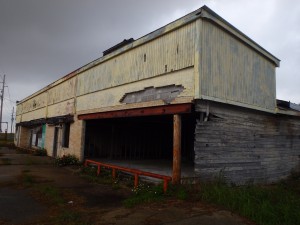
cheap ivermectin The old Barrois Drug Store.
how to order a prednisone taper Buras did indeed have a little downtown, but the shops were all boarded up or abandoned; it did have a library, however, built on stilts. Local government has apparently made the determination that future floods are to be expected. I visited at a Vietnamese coffee shop just to see it, and got a soda in its cheerless environs; I then cycled through some quiet ground, springing up in dense thickets of trees and shrubs and vines. I saw the fish-oil factory Roland had mentioned, run by a company called Daybrook, and so I knew I had arrived at Empire; I crossed a canal on a drawbridge, landing at a fine old church called St. Ann’s, a white clapboard structure which, except for its denominational affiliation (Roman Catholic) and a noticeable emphasis on the cross as a decorative element, might be at home in New England.
Here beside the church a pair of older men were working on a malfunctioning sedan. They were as unlikely and picturesque a pair as could be imagined, the one looking like a respectable retired manager of a stationery business, the other a big fat slow man in baseball cap, overalls, and a footlong ZZ Top beard. I do not have to say which man had come to fix whose engine. They had apparently gone to school together. Overalls had a pickup truck which for grime, rust, and picturesqueness could not be excelled; its odometer read over five hundred thousand miles. “That don’t tell you nothin’ ‘cept how old the odometer is,” he said. “I think I’ve changed out every other part in the whole thing.”
“Probably more than once,” Professional said.
“Probably more than once,” Overalls agreed.
I wanted to take a picture of them but was too shy to do so.
The light was very fine, and the sun was setting; so I decided to leave my bike and walk over to the highway, which crossed the canal on a large, tall bridge which commanded a fine view: it had been the highlight of the drive from New Orleans to Venice. It did not disappoint. I watched the boats down below; I had been wondering about some of the canopied flat-bottomed boats I had seen, wondering what their various purposes were; and I found out. These were oyster boats. I could see men unloading the boats, one burlap sack at a time. This was one industry which had hardly changed at all, apparently: these oyster sacks had been the standard mode of gathering oysters for many decades.
Roland had told me that the oyster harvest was smaller than it had been before Hurricane Katrina, but he did not think it was because the oysters were fished out or unhealthy: he said that there were simply fewer oyster fishermen. They had all gotten big payouts from the insurance companies after Katrina; and many, who were nearing retirement age anyway, had taken the payouts and retired on them.
I could see large piles of white stuff near the oyster boats, and my eyes are not what they used to be, so I called down to the men:
“Hey! Are those oyster shells there all piled up?” Because if they were, I had never seen so many oyster shells in one place.
“It’s gravel,” a man yelled back at me.
“What do you do with the gravel?” I called back.
“We dump it in the water. The oysters attach themselves to it.” They were building oyster reefs.
I kept on walking, up to the top of the bridge, and there – mirabile dictu – I saw some dark shapes moving in the canal below. Again I was struck with wonder and joy – “Oh my God,” I said, “SEA OTTERS!!!” I have since read that sea otters live only in the Pacific, so these must have been river otters, but my joy in them was the same. They were swimming around in the open water of the canal. I watched as they swam, in a pack, to an abandoned boat, which they boarded, using it as a gangplank to get onto land, where they frisked about a bit on the tall grass, and then, in a pack, all decided to go back into the water and swim under the bridge, playing and gamboling all the while. It was amazing. Again, I was struck by how alive this place was – how beautifully alive. I could watch the human beings living off it just as much as the other animals.
I went back to my bike and set out once more. I had heard that the pastor of the Catholic Church in Port Sulphur let people camp out behind the church, so I figured I would head there; but the sun was setting, so I pulled off the road where I saw a little pathway go over the levee to an old river-landing. Here I found an old rooster and his hen living happy little independent lives in the old dock; and I pitched my tent not far from them, just a few feet from the bank, and watched the sun go down on my first day on the Missisippi River.
I had found, during the latter half of the day, neither supermarket nor restaurant of any sort; and so I set up my tent and struck off in the dark for Port Sulphur. This was not an ideal situation – I don’t like biking in the dark – but I was hungry, and I felt I had to try to get something.
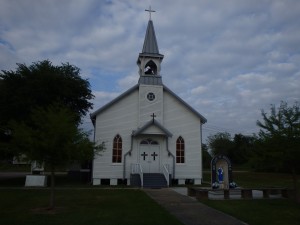
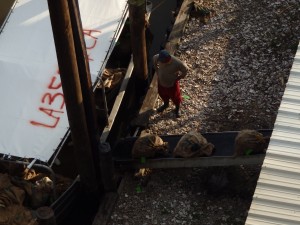
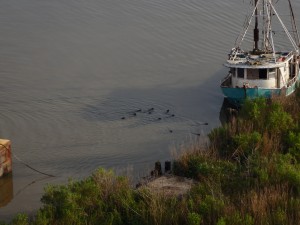
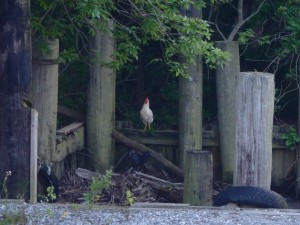
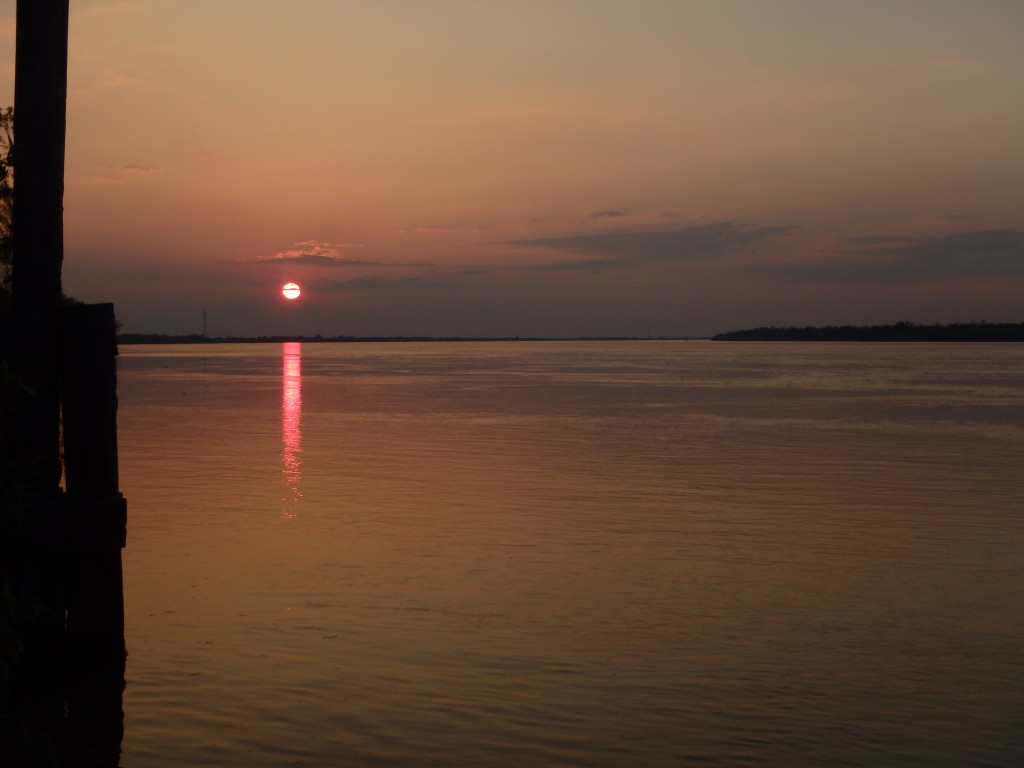
Post a Comment